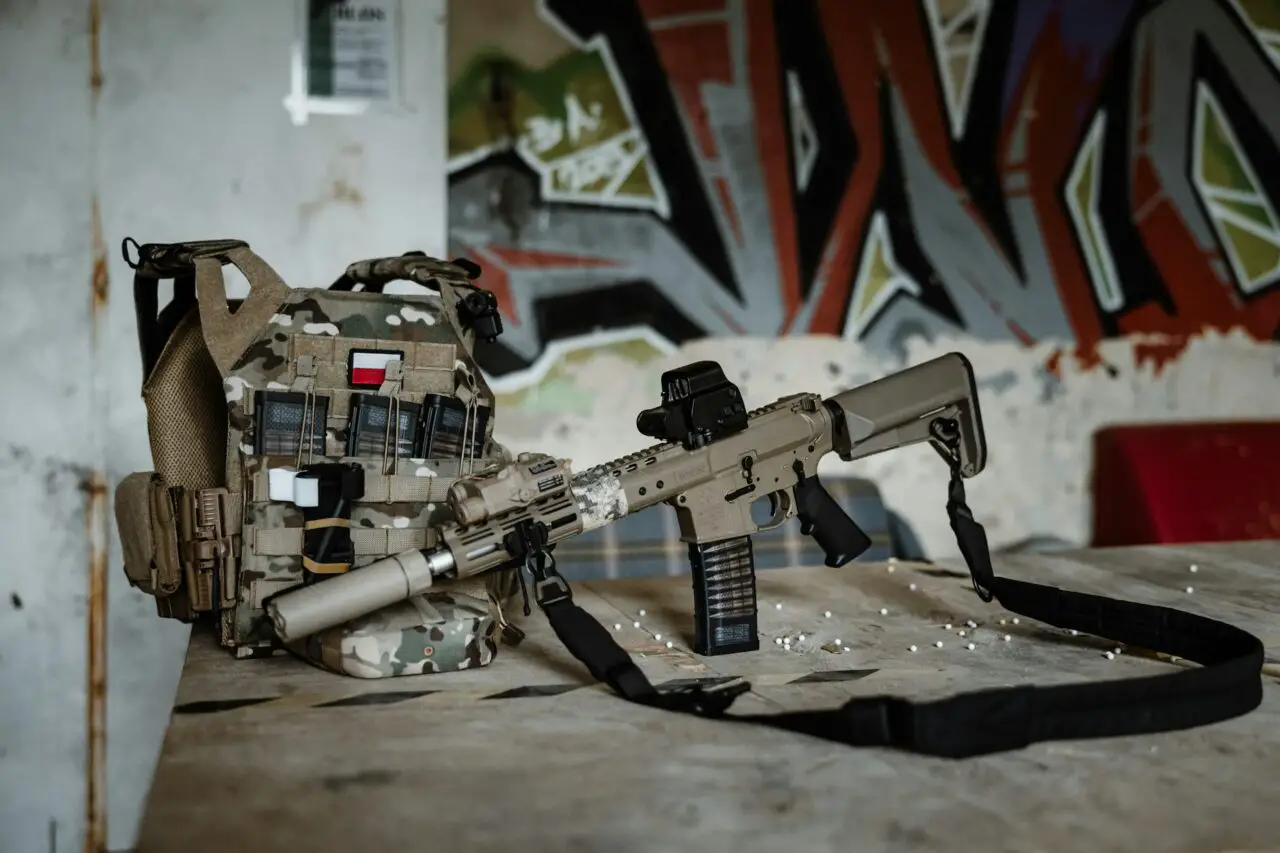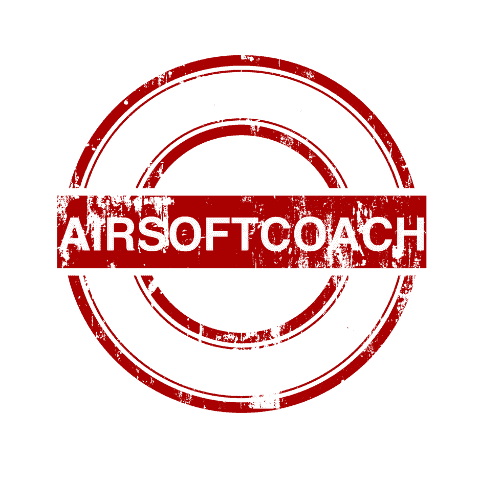
To make the most of your airsoft battles, having the proper tactical gear is essential and an airsoft vest is one of the most important pieces of kit to get right. Your vest needs to safely carry all your magazines, accessories, and protective equipment while allowing freedom of movement.
Choosing the optimal vest for your style of play will give you a key advantage out in the field. This comprehensive guide will walk you through everything you need to know about picking the perfect airsoft vest.
We’ll cover how to choose the right camo, storage, and features for your role, along with tips for finding a vest that fits well and stays comfortable all day long in action. Follow these tips to outfit yourself with tactical airsoft gear that enhances your gameplay experience.
How to Choose the Right Airsoft Vest
Airsoft is an exciting hobby that allows you to simulate military and law enforcement scenarios. Having the right gear, especially a proper airsoft vest, is crucial for both protection and carrying all your necessary equipment. Follow this guide to learn how to pick the ideal vest for your needs.
Determine Your Play Style
The first step is deciding if you prefer to play as a rifleman, sniper, support gunner, or other combat role. Each requires a different setup.
Riflemen can get by with a minimalist plate carrier vest for protection. Support gunners will need a vest with ammo pouches for extra magazines and belts. Snipers want a ghillie suit setup for concealment. Identify your airsoft weapon and role before choosing a vest.
Choose Material and Durability
Airsoft vests are made from different materials, including cotton, polyester, nylon, and condura. Nylon and condura are the most durable, while cotton is the least. Look for sturdy stitching and quality fasteners like metal d-rings and buckles.
The vest should withstand scrapes and BB hits without falling apart. Heavier fabrics like 1000D Cordura are ideal for woodland games. Lighter material works for indoor fields.
Get Proper Sizing
Airsoft vests must fit snugly to stay in position while running and maneuvering. Yet they still need enough adjustability for wearing other gear underneath.
Measure your chest circumference and order a size up if between sizes. Taller players should ensure the vest length covers their vitals. Trying on vests in person is best to get the right fit.
Pick Attachment and Pocket Options
Attachment options like MOLLE webbing or velcro panels allow customizing your vest with pouches. Look for vests with webbing on the front, sides, and back to add ammo magazines, utility pouches, grenade pouches, and other gear.
Having adequate built-in pockets is also essential. Standard vests have magazine pouches, map pockets, and radio pouches pre-installed. Ensure it has enough storage for your needs.
Get the Right Camo Pattern
Airsoft vests come in camo patterns that match different environments. Woodland camo works best in forest environments. Desert or tan colors are better for outdoor desert games. Black is ideal for indoors and night games.
Using a camo that matches the field or scenario makes it easier to blend into the surroundings and avoid getting spotted. Always check if a venue has a camo restriction before choosing your vest.
Prioritize Comfort and Mobility
A quality airsoft vest should move with you without chafing or limiting mobility. Look for vests with padded shoulder straps and interior lining for comfort. The vest shouldn’t ride up on your torso when running or crouching.
Battle belts are great for lighter setups. Plate carriers offer protection at the cost of breathability. Stay away from cheap vests with poor ergonomic designs that can hinder movement.
Choose Within Your Budget
Airsoft vests range from budget-friendly under $50 to high-end $200+ models. In general, more expensive vests have better quality, durability, and more features. But you can find affordable vests with good performance if you look for sales and closeouts.
Determine how much use you’ll get out of the vest when setting a budget. Invest more for frequent games, but you can save on a vest for occasional use. Quality protective eyewear should be your top priority purchase.
What are the different types of airsoft vests?
The main types are plate carrier vests, chest rigs, battle belts, and load-bearing vests. Plate carriers are armored vests that hold hard armor plates. Chest rigs are minimalist vests with pouches for magazines and gear. Battle belts distribute weight to your hips. Load-bearing vests maximize storage capacity.
There are several main types of vests to consider for airsoft:
- Plate Carrier Vests – These vests are designed to hold hard armor plates for protection. They have a minimalist design focused on safety. Plate carriers allow you to slide in padded plastic dummy plates or real steel plates. They offer tactical protection for rifleman roles.
- Chest Rigs – Chest rigs are a lightweight vest option that carries magazines and ammunition. They have a grid of webbing and pouches across the front and sometimes sides. Chest rigs provide easy access to ammo without being overly bulky.
- Battle Belts – Battle belts are not a vest, but rather distribute the weight of pouches and gear around your hips and waist. They offer increased mobility and breathability compared to vests. Battle belts work well for lighter setups.
- Load Bearing Vests – These vests focus on maximizing storage space for ammo, gear, and supplies. They will have webbing and pouches covering the front, sides, and back. Load-bearing vests allow you to carry more magazines and equipment.
- Ghillie Suits – Ghillie suits are full camouflage outerwear to blend into the foliage. The jacket and hood have mesh netting so you can add natural camo-like leaves or twigs to them. Ghillie suits are ideal for sniper roles needing concealment.
What safety gear should I use with an airsoft vest?
Using proper safety gear with your airsoft vest is crucial for avoiding injuries. Here are some essential protective items to use:
- Eye Protection – High-quality ANSI Z87.1-rated goggles or other full-seal eye protection is a must. Mesh lower face masks also help protect your mouth and teeth. Never skimp on eye pro.
- Gloves – Tough tactical gloves protect your hands when sliding and crawling. They shield against BB strikes and rope burns. Look for gloves with padded knuckles.
- Knee Pads – Hard knee pads let you kneel and slide comfortably on various terrain. They also provide impact protection when taking cover.
- Elbow Pads – Foam elbow pads safeguard your joints when low crawling through brush or taking a dive.
- Boots – Wear sturdy boots or ankle-supporting shoes to avoid rolls and sprains. Boots also shield your feet from BB strikes.
- Helmet (optional) – Some players use lightweight helmets for additional head protection, especially when using riot shields.
Make sure to only use biodegradable BBs and keep your airsoft gun velocity within legal limits. Use your airsoft gear safely and responsibly.
How do I properly size an airsoft vest?
Getting the right size airsoft vest is important for comfort and mobility. Here are some tips on sizing:
- Measure your chest circumference under your armpits, keeping the tape measure snug. Compare this measurement to the vest’s size chart.
- It’s better to size up if between sizes or planning to wear bulky gear underneath. Vests should fit snugly but not restrict movement.
- Pay attention to vest length too. Tall or long-torso players should ensure the vest extends fully down to protect their vital organs.
- Try wearing the vest with your intended under gear like a combat shirt. Move your arms in all directions to test mobility.
- Shoulder straps should be adjustable for dialing in the right fit. Make sure straps are not too loose or tight.
- Do final sizing checks with the vest fully loaded with your magazines and gear pouches. The weight should be distributed comfortably.
- Consider attaching side elastic cummerbunds to tighten and stabilize the vest if needed.
Taking accurate measurements and trying on vests is ideal for getting your optimal size. A properly fitted vest will be snug but movable and able to hold all your mags securely.
How do I attach pouches and gear to a MOLLE vest?
A MOLLE vest refers to a modular tactical vest or plate carrier that uses a MOLLE system for attaching pouches and gear.
MOLLE stands for Modular Lightweight Load-carrying Equipment. It is a grid of heavy-duty nylon webbing sewn onto the vest.
The MOLLE webbing consists of rows of 1-inch wide straps spaced 1 inch apart. This creates PALS (Pouch Attachment Ladder System) grids for mounting modular pouches, holsters, and other attachments.
The most common method of securing pouches and gear to a MOLLE vest is by using MOLLE clips – plastic clips that weave between the straps and lock attachments in place. Other options include carabiners, hook-and-loop, and zip ties.
Key features of MOLLE vests:
- Allow for extensive customization and modularity. Users can tailor their loadout by attaching different pouches and gear.
- Distribute weight evenly across the body using the grid layout.
- Offer quick access to magazines, tools, and other mission essentials.
- Durable construction from fabrics like 1000D cordura nylon withstands hard use.
- Offer a streamlined and low-profile design compared to old-style LBE vests.
MOLLE vests are popular with military, law enforcement, airsoft players, and others needing a customizable tactical platform. The modularity enables configuring the perfect setup for each mission.
Here are some tips for attaching accessories:
- Use MOLLE clips, carabiners, zip ties, or hook-and-loop straps to secure pouches and accessories in the vest’s PALS webbing.
- Only attach essential lightweight gear to avoid weighing yourself down. Prioritize ammo magazines, utility pouches, maps, radios, and other mission-critical items.
- Place larger magazine pouches higher on the front webbing for easy access. Reserve lower rows for smaller items.
- Attach a hydration carrier to the back webbing if your game requires extended missions. Route the drinking tube over your shoulder.
- Keep medical supplies like a first aid kit in a pouch on your weak side for quick access.
- Use a mix of fastener types for modularity. Carabiners make it easy to remove non-essential gear quickly.
- Check attachments regularly to ensure they are tight and secure during active games.
With a MOLLE vest, you can customize your loadout to match your style of play. Stick to the essentials and distribute weight evenly for the best performance.
Conclusion
Choosing the optimal airsoft vest involves carefully considering your style of play, protection needs, storage requirements, and intended environments. Look for durable, lightweight vests with extensive MOLLE webbing to customize your gear loadout. Properly fitted vests that match your camo needs allow you to play at your best. Investing in the right vest for your specific airsoft kit will provide better maneuverability, protection, and immersion to enhance your experience.

